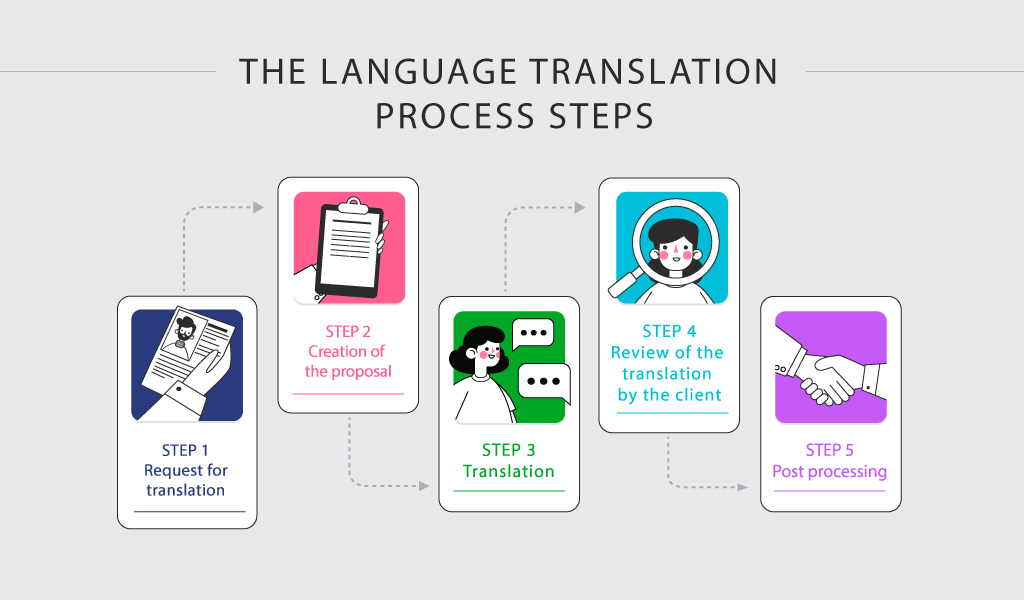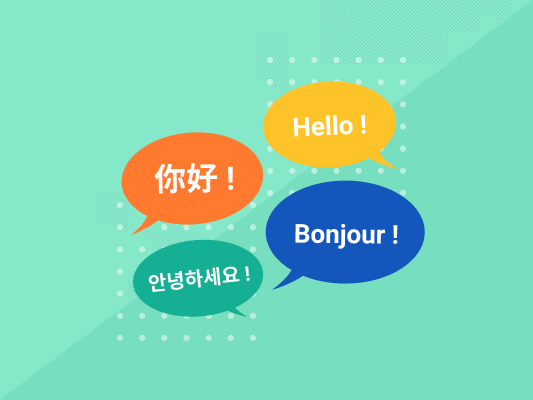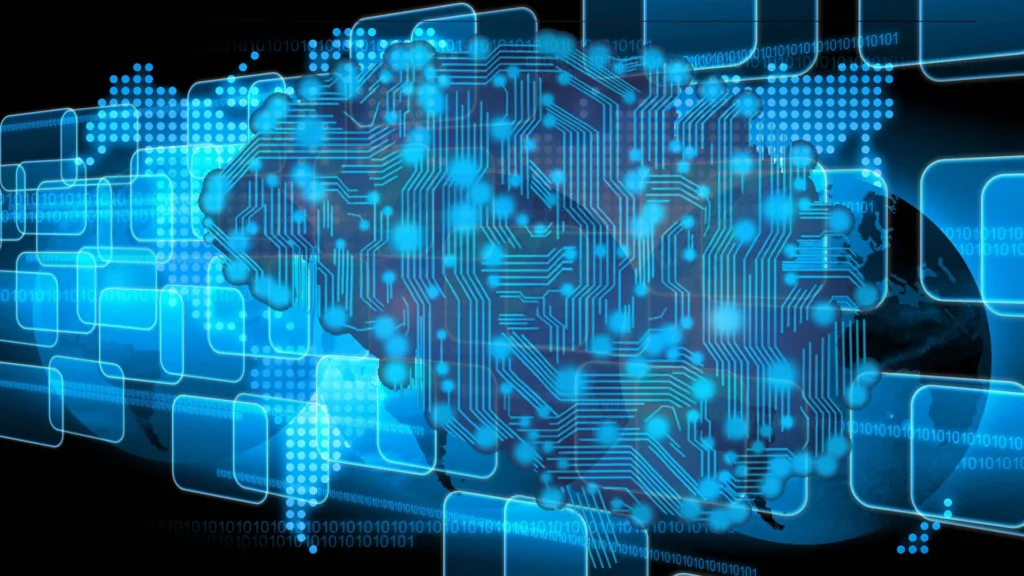Introduction:
In our interconnected global society, Language Translation serves as a bridge that connects individuals, communities, and cultures. However, linguistic diversity can present challenges, hindering effective communication. Language translation, a discipline that has evolved significantly in recent years, plays a pivotal role in overcoming these barriers. In this comprehensive blog, we will explore the intricate world of language translation, delving into its history, advancements, challenges, and the transformative impact it has on fostering understanding and collaboration across the globe.
I. A Historical Perspective:

-
Ancient Roots of Translation: The roots of language translation can be traced back to ancient civilizations where interpreters facilitated communication between people speaking different languages. Notable examples include ancient Egypt, where multilingual scribes played a crucial role in diplomatic exchanges, and the Silk Road, where trade and cultural interactions necessitated linguistic mediation.
-
Medieval Translations: During the medieval period, the translation of religious texts played a significant role in disseminating knowledge. Monasteries and scholars translated Greek and Latin works into various vernacular languages, contributing to the spread of education and religious understanding.
-
Renaissance and the Rise of Modern Translation: The Renaissance witnessed a revival of interest in classical literature, leading to a surge in translation activities. This era marked the transition from religious and scholarly translations to a broader scope that encompassed literature, philosophy, and scientific texts.
II. The Evolution of Language Translation:
- Manual Translation: For centuries, translation was primarily a manual and labor-intensive process. Translators relied on their linguistic prowess and cultural understanding to convey the essence of a message from one language to another. While this approach is still integral, technological advancements have revolutionized the field.
- Machine Translation Emergence: The mid-20th century saw the advent of machine translation, driven by the need for rapid translations during wartime. Early machine translation systems faced limitations in capturing nuances, context, and idiomatic expressions. Despite challenges, they paved the way for the development of more sophisticated technologies.
- Computer-Assisted Translation (CAT): The late 20th century witnessed the rise of computer-assisted translation tools. These tools, including translation memory systems, enabled human translators to work more efficiently by leveraging previously translated segments. CAT tools marked a significant leap forward in productivity and consistency.
- Neural Machine Translation (NMT): In recent years, neural machine translation has emerged as a game-changer. Powered by artificial intelligence and deep learning, NMT systems analyze vast amounts of bilingual data to generate more contextually accurate translations. This technology has substantially improved the fluency and coherence of automated translations.
III. The Significance of Language Translation:

- Global Communication and Business: In the business landscape, language translation is indispensable for companies operating on a global scale. From marketing materials to legal documents, accurate translations are crucial for establishing a presence in diverse markets and fostering international collaborations.
- Cultural Exchange and Diplomacy: Language translation serves as a catalyst for cultural exchange and diplomatic relations. Translated literature, films, and diplomatic documents enable people from different backgrounds to understand and appreciate each other’s cultures, fostering mutual respect and cooperation.
- Access to Knowledge and Education: Translation plays a pivotal role in democratizing access to knowledge. Translated academic texts, research papers, and educational materials make information accessible to a broader audience, transcending linguistic barriers and promoting global collaboration in the pursuit of knowledge.
- Humanitarian Efforts and Crisis Response: In times of crisis, such as natural disasters or pandemics, effective communication is paramount. Language translation facilitates the dissemination of critical information, ensuring that affected communities receive timely and accurate instructions, aid, and support.
IV. Challenges in Language Translation:

- Linguistic Nuances and Cultural Sensitivities: Languages are rich in nuances, cultural references, and idioms that may not have direct equivalents in other languages. Translators face the challenge of preserving the intended meaning while navigating cultural sensitivities and ensuring the translated text resonates with the target audience.
- Complexities of Technical and Specialized Content: Translating technical or specialized content requires a deep understanding of the subject matter. Whether it’s scientific literature, legal documents, or technical manuals, maintaining accuracy and clarity poses a unique set of challenges for translators.
- Machine Translation Limitations: Despite advancements in machine translation, it is not without its limitations. Automated systems may struggle with context, colloquialisms, and linguistic subtleties. Human intervention is often necessary to ensure the precision and cultural appropriateness of translations.
- Security and Privacy Concerns: In an era of digital transformation, the transmission and storage of translated content raise security and privacy concerns. Protecting sensitive information during the translation process is crucial, especially in sectors such as healthcare, finance, and legal services.
V. The Future of Language Translation:
- Advancements in Artificial Intelligence: The future of language translation lies in further advancements in artificial intelligence. Continued developments in machine learning algorithms, natural language processing, and neural networks will enhance the capabilities of translation tools, enabling them to understand context, tone, and even cultural nuances more effectively.
- Real-time Translation Technologies: Real-time translation technologies, both in speech and text, are gaining prominence. With the advent of wearable devices and augmented reality, individuals can communicate seamlessly across languages, breaking down language barriers in real-world scenarios.
- Integration of Blockchain for Security: As concerns over data security and privacy persist, the integration of blockchain technology into translation processes may become more prevalent. Blockchain’s decentralized and secure nature can enhance the confidentiality and integrity of translated content.
- Collaboration Between Humans and AI: The future landscape of language translation is likely to involve a collaborative approach between human translators and AI-driven tools. While automated systems excel in processing large volumes of data, human translators bring cultural understanding, creativity, and nuanced interpretation to ensure the highest quality translations.
“Language Translation Unveiled: A Comprehensive Exploration of Importance, Uses, and Transformative Benefits”
Introduction:

In our modern, interconnected world, language serves as a vital conduit for communication, enabling individuals from diverse backgrounds to connect, collaborate, and understand each other. However, the rich tapestry of languages also poses a challenge to effective global communication. Language translation emerges as a powerful solution to bridge this gap, offering a gateway to understanding and unity across linguistic boundaries. In this blog, we embark on a journey to unravel the significance, diverse uses, and transformative benefits of language translation.
I. Understanding the Importance of Language Translation:
- Cultural Exchange and Understanding: Language is deeply intertwined with culture, and translation plays a pivotal role in facilitating cultural exchange. Translating literary works, films, and art allows individuals to explore and appreciate diverse cultures, fostering mutual understanding and respect. It acts as a bridge, connecting people from different backgrounds and fostering a sense of shared humanity.
- Global Business and Commerce: In the realm of global business, language translation is an indispensable tool. Companies seeking to expand their reach across borders must communicate effectively with diverse audiences. Translating marketing materials, product information, and legal documents enables businesses to establish a meaningful presence in international markets, driving growth and profitability.
- International Diplomacy and Relations: Diplomatic relations rely heavily on effective communication, and language translation is fundamental to this process. Translators and interpreters play a crucial role in international meetings, negotiations, and diplomatic exchanges, ensuring accurate and nuanced communication between representatives of different nations.
II. The Multifaceted Uses of Language Translation:
- Literary Translation: Literary translation brings the world’s literature to a broader audience. From classic novels to contemporary poetry, translating literary works allows readers to experience the beauty and diversity of global storytelling. Translators serve as cultural ambassadors, introducing readers to new perspectives and narratives.
- Legal Translation: In the legal domain, precision is paramount. Legal translation ensures that legal documents, contracts, and agreements maintain their accuracy and legal validity when translated into different languages. This is crucial for international legal proceedings, business transactions, and collaborations across borders.
- Medical and Scientific Translation: Translating medical documents, research papers, and scientific literature is vital for disseminating knowledge in the healthcare and scientific communities. It facilitates collaboration between researchers, ensures accurate dissemination of medical information, and contributes to advancements in healthcare and scientific understanding.
III. The Transformative Benefits of Language Translation:
- Cultural Enrichment and Diversity Appreciation: Language translation fosters cultural enrichment by providing access to the wealth of global literature, art, and thought. It encourages individuals to appreciate the richness of diversity, promoting tolerance and understanding. Translated works serve as windows into different worlds, broadening perspectives and nurturing a global mindset.
- Global Economic Growth: In the business arena, the benefits of language translation extend to economic growth. Companies that invest in translation services can tap into new markets, reach a wider customer base, and build lasting relationships with international clients. Translation contributes to a more inclusive global economy, driving innovation and prosperity.
- Enhanced International Collaboration: Language translation is the cornerstone of effective international collaboration. Whether it’s collaborative research projects, joint ventures, or cross-cultural initiatives, accurate communication is essential. Translation services break down language barriers, facilitating seamless collaboration and fostering a sense of shared purpose on a global scale.
IV. Challenges in Language Translation:

- Maintaining Linguistic Nuances: Languages are rich and nuanced, and preserving these subtleties during translation can be challenging. Translators must navigate idiomatic expressions, cultural nuances, and linguistic intricacies to convey the intended meaning accurately.
- Contextual Understanding: Effective translation requires a deep understanding of the context in which the content is situated. Ambiguities can arise when the translator is not familiar with the cultural, historical, or social context of the source material, emphasizing the importance of cultural competency in translation.
- Technical and Specialized Content: Translating technical or specialized content, such as scientific research or legal documents, demands a high level of expertise in both the subject matter and language. Ensuring accuracy and clarity in these contexts poses a unique set of challenges for translators.
/translate-keyboard-d00059f587544c41a21d8db1ebb58e93.jpg)
V. Conclusion: Bridging Worlds Through Language Translation
READ MORE-
Unveiling the Power of Kaggle Datasets: A Treasure Trove for ML Enthusiasts
The Best Role of Synthetic Datasets in Machine Learning Research
Navigating the Seas of Big Data: Challenges and Opportunities for Machine Learning

 Afrikaans
Afrikaans Albanian
Albanian Amharic
Amharic Arabic
Arabic Armenian
Armenian Azerbaijani
Azerbaijani Basque
Basque Belarusian
Belarusian Bengali
Bengali Bosnian
Bosnian Bulgarian
Bulgarian Catalan
Catalan Cebuano
Cebuano Chichewa
Chichewa Chinese (Simplified)
Chinese (Simplified) Chinese (Traditional)
Chinese (Traditional) Corsican
Corsican Croatian
Croatian Czech
Czech Danish
Danish Dutch
Dutch English
English Esperanto
Esperanto Estonian
Estonian Filipino
Filipino Finnish
Finnish French
French Frisian
Frisian Galician
Galician Georgian
Georgian German
German Greek
Greek Gujarati
Gujarati Haitian Creole
Haitian Creole Hausa
Hausa Hawaiian
Hawaiian Hebrew
Hebrew Hindi
Hindi Hmong
Hmong Hungarian
Hungarian Icelandic
Icelandic Igbo
Igbo Indonesian
Indonesian Irish
Irish Italian
Italian Japanese
Japanese Javanese
Javanese Kannada
Kannada Kazakh
Kazakh Khmer
Khmer Korean
Korean Kurdish (Kurmanji)
Kurdish (Kurmanji) Kyrgyz
Kyrgyz Lao
Lao Latin
Latin Latvian
Latvian Lithuanian
Lithuanian Luxembourgish
Luxembourgish Macedonian
Macedonian Malagasy
Malagasy Malay
Malay Malayalam
Malayalam Maltese
Maltese Maori
Maori Marathi
Marathi Mongolian
Mongolian Myanmar (Burmese)
Myanmar (Burmese) Nepali
Nepali Norwegian
Norwegian Pashto
Pashto Persian
Persian Portuguese
Portuguese Punjabi
Punjabi Romanian
Romanian Russian
Russian Polish
Polish Samoan
Samoan Scottish Gaelic
Scottish Gaelic Serbian
Serbian Sesotho
Sesotho Shona
Shona Sindhi
Sindhi Sinhala
Sinhala Slovak
Slovak Slovenian
Slovenian Somali
Somali Spanish
Spanish Sundanese
Sundanese Swahili
Swahili Swedish
Swedish Tamil
Tamil Tajik
Tajik Telugu
Telugu Turkish
Turkish Ukrainian
Ukrainian Urdu
Urdu Uzbek
Uzbek Thai
Thai Vietnamese
Vietnamese Welsh
Welsh Xhosa
Xhosa Yiddish
Yiddish Yoruba
Yoruba Zulu
Zulu